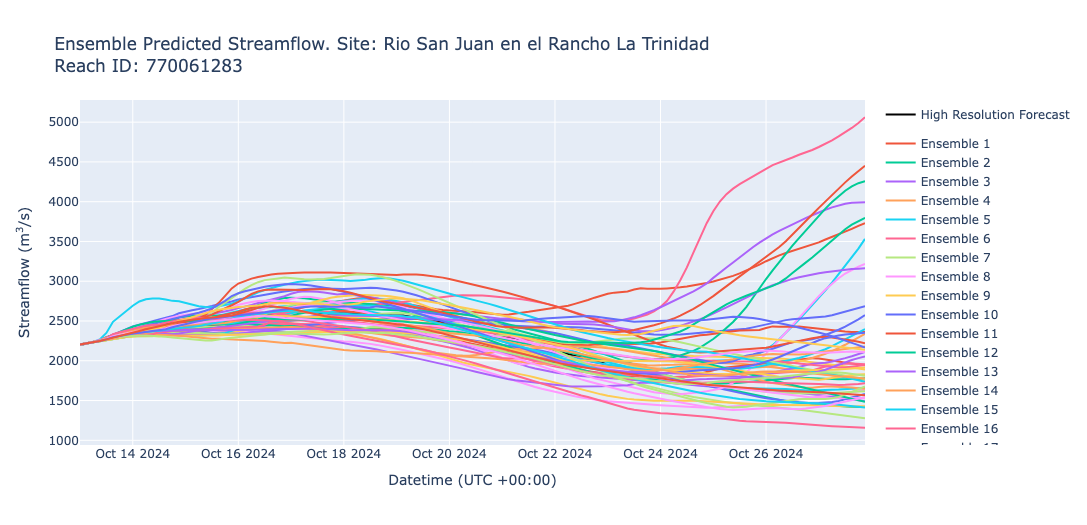Forecast Data
Terms and Vocabulary
- IFS: Integrated Forecast System. The name of the coupled meteorology and land surface model used to generate forcings for the RFS results.
Overview
RFS produces ensemble streamflow forecasts using IFS data from the ECMWF. Daily forecasts are calculated at the ECMWF Supercomputing facility in Bologna, Italy and are available by 12 PM UTC. Flows are reported in cubic meters per second. The forecast has a 3-hour time step, where each flow value represents the average flow that occurred in the river during the previous 3 hours. Below is an example graph showing all the ensemble members.

Each forecast includes a 50+1 member ensemble meaning there is 1 baseline (control) prediction and 50 perturbations (slight variations) of the baseline condition.
Each day's forecast is initialized using the 24-hour mean value from the ensemble members on the previous day as the initial condition. The IFS data have a spatial resolution of about 9 kilometers horizontally at the equator. The grid of IFS runoff values are mapped to RFS catchment boundaries using GIS zonal statistics methods.
| Model Property | Retrospective Simulation |
|---|---|
| Earliest Date | 01 July 1940 |
| Simulation Type | Ensemble |
| Ensemble Members | 50+1 |
| Lead time | 15 Days |
| Time Step | 3 hourly average |
| Update Frequency | Daily at 00:00 UTC |
| Bulk Download Available | Yes |
| Query & Subset Available | Yes |
Interpreting an Ensemble Forecast
Each ensemble member has an equal probability of occurring. Therefore, forecasts are best understood by looking at summaries of the ensembles rather than individual members.
Forecast plots are designed to help users interpret the range of possible outcomes and uncertainties. The most commonly used forecast plot includes the median, the 20th percentile, and the 80th percentile. These represent 60% of the probability distribution within the ensemble members and provide insight into the potential variability of future streamflow. This approach allows users to see the range of probable scenarios for their streams.
In the following example forecast plot, there are 3 areas to focus on:
- Black Line: The median of the 51 ensemble members. This is the "best guess" of river flow.
- Blue Lines: The 20th and 80th percentile values
- Blue Shaded Area: Represents the uncertainty in the prediction. It is the middle 60% of the ensemble. The narrower the blue region, the more confident the model is. The true flow is more likely than not to fall within the blue shaded area.
